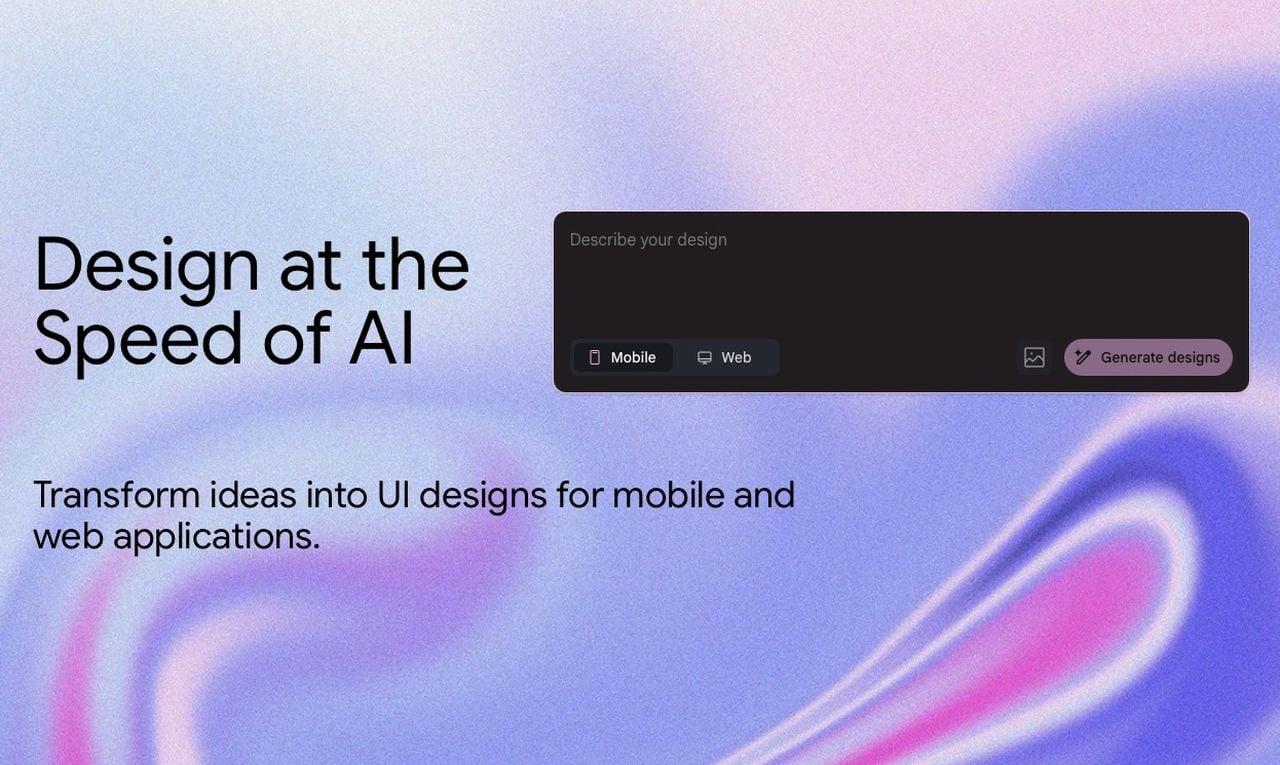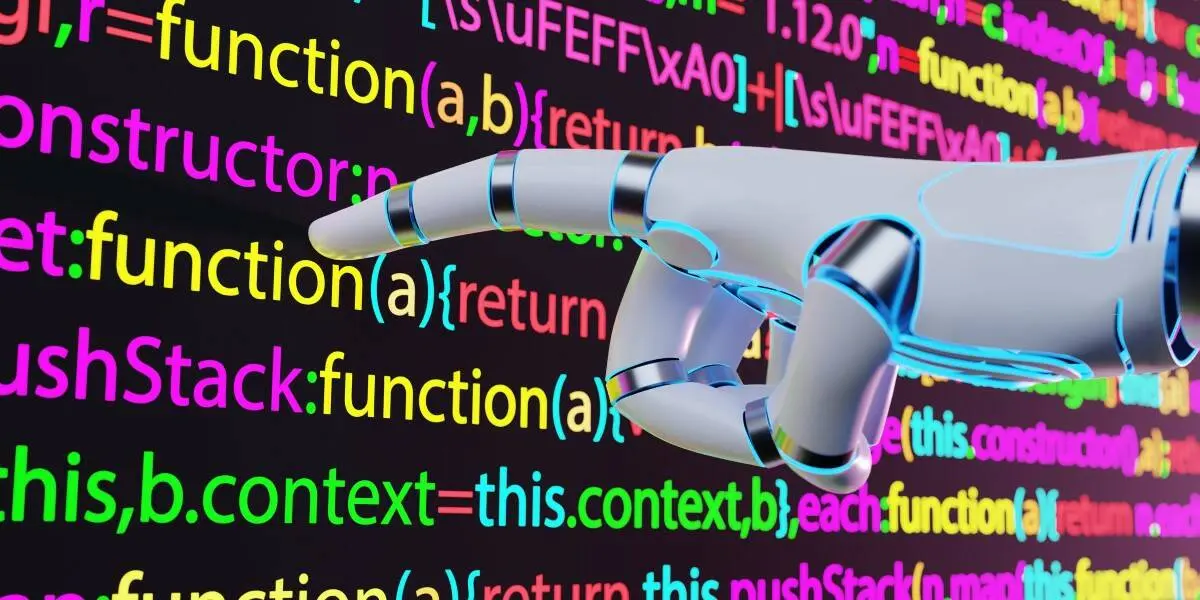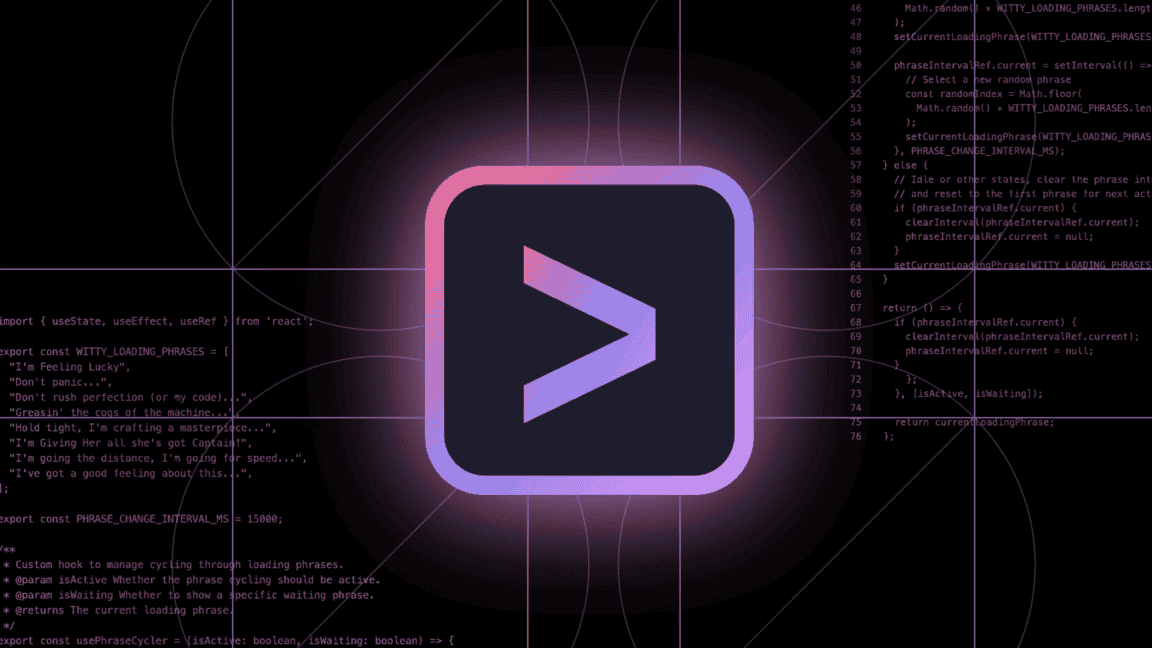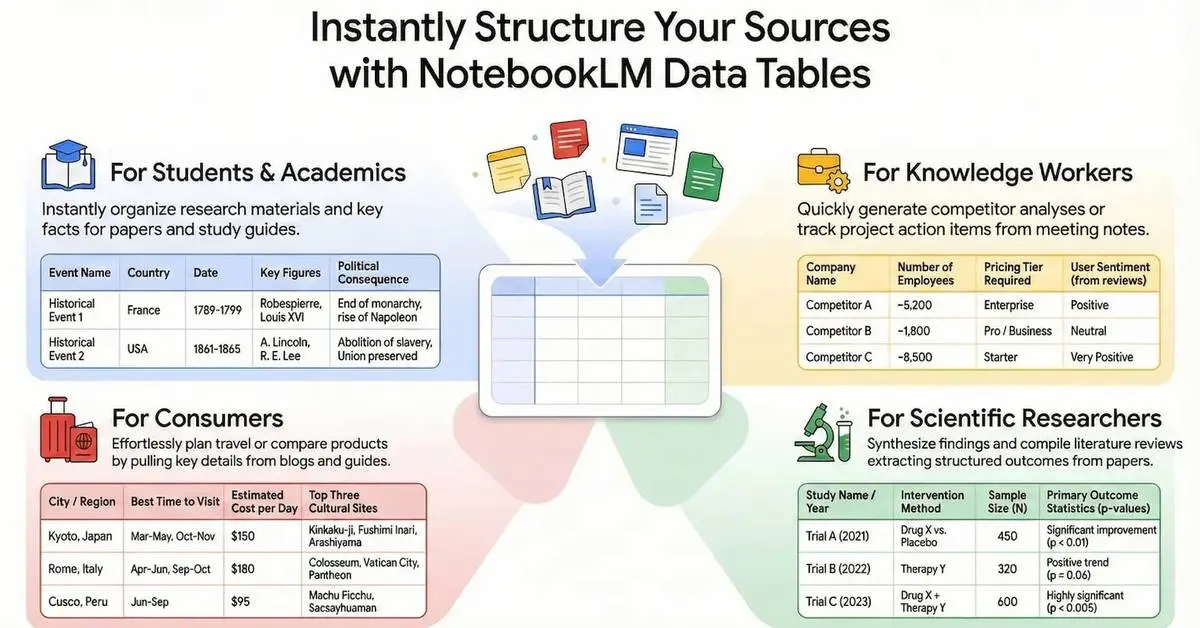Google Stitch: Revolutionizing UI Design with AI-Powered Natural Language Commands
2 Sources
2 Sources
[1]
Everyone's looking to get in on vibe coding -- and Google is no different with Stitch, its follow-up to Jules
Join our daily and weekly newsletters for the latest updates and exclusive content on industry-leading AI coverage. Learn More Vibe coding is arguably one of the hottest trends in tech right now, as it reflects a wider adoption of AI and natural language prompts for basic code completion (challenging the conventional coding mindset that humans should complete downstream tasks). Google is releasing Stitch, a new experiment from Google Labs, to compete with Microsoft, AWS, and other existing end-to-end coding tools. Now in beta, the platform designs user interfaces (UIs) with one prompt -- and some developers are already gushing. "Google dropped the most powerful UI designer in the world," Brendan Jowett, owner of voice AI company Inflate AI, posted on X. A spate of vibe coding tools The use of AI in programming and development certainly isn't new, but the concept of "vibe coding" -- coined by OpenAI cofounder Andrej Karpathy earlier this year -- is a newer concept incorporating generative AI to automate coding tasks typically done manually. This goes beyond existing AI assistants and drag-and-drop no-code and low-code tools: The focus is on the end result, not the journey there. "You finally give into the vibes, embrace exponentials and forget that code even exists," Karpathy wrote on X. Top players in the integrated development environment (IDE) space include Windsurf (formerly Codeium), Cursor, Replit, Lovable, Bolt, Devin and Aider. Anthropic also recently launched its command-line AI agent Claude Code. Larger players in addition to Google are looking to stake their claim, as well: Amazon Web Services (AWS) is offering its Amazon Q Developer AI assistant as an add-on for developers to access directly at any point in their coding; Microsoft released GitHub Copilot agent mode; OpenAI is looking to extend its capabilities in vibe coding with its Codex update and intended $3 billion purchase of Windsurf; and Agentforce is writing about 20% of Salesforce's code. Google, for its part, also recently released autonomous coding agent Jules into beta. Stitch builds UIs with a prompt With Google Stitch, users can designate whether they want to build a dashboard or web or mobile app and describe what it should look like (such as color palettes or the user experience they're going for). The platform instantly generates HTML, CSS+ and templates with editable components that devs and non-devs can customize and edit (such as instructing Stitch to add a search function to the home screen). They can then add directly to apps or export to Figma. "Design is an iterative process, and Stitch facilitates this by allowing you to generate multiple variants of your interface," Google Labs researchers explain. "Experiment with different layouts, components and styles to achieve the desired look and feel." Users can choose a 'standard mode' that runs on Gemini 2.5 Flash or switch to an 'experimental mode' that uses Gemini Pro and allows users to upload visual elements such as screenshots, wireframes and sketches to guide what the platform generates. Google also plans to release a feature allowing users to annotate screenshots to make changes. Stitch is "meant for quick first drafts, wireframes and MVP-ready frontends," Jowett notes in his X thread. Some say layouts are 'unreal'; others call Bolt superior Many users have offered early praise. One noted: "I tried Stitch with a 'crypto wallet dashboard' prompt and it nailed the layout in under 10 seconds. Unreal." X user "God of Prompt" posted: "Honestly shocked this isn't getting more attention. A real UI generator backed by Gemini with Figma export? Instant use-case." However, others found the beta version less than optimal. Elizabeth Alli of DesignerUp outlined her experiences in a blog post: The dev prompted Stitch to make an app to help build mindfulness habits. She reported that it "missed the mark" on design elements (such as the colors she was looking for) and she wasn't able to click around, as the platform only generated one screen (and in subsequent prompts she had difficulty generating the next logical screen or any other screen). Also, there aren't many editing options to choose from, and when Alli uploaded an image from a website she designed, she was not impressed by the formatting, typography, color combinations and "dated" shadows and icons. "I had much higher expectations from Google given that there are already so many existing AI to UI design generation tools on the market that do this much better," she writes. "Their effort seems half-baked at best." While it is in beta, it doesn't have "anywhere near" the polished output of other offerings such as Figma's First Draft or Uizard's Autodesigner. "This release seems like a bit of a mad dash to throw their hat into the ring of the AI UI design hype," Alli notes. Other early users agree that Stitch can be wonky and underwhelming, that the designs aren't quite there yet, and that other existing tools are still superior. One X user lamented: "I used the same prompt that I used to generate landing pages in other AI tools which return direct code, but the designs were so much better in the other tools such as Bolt." It's clear Google has some kinks to work out if it intends to compete with already entrenched players. Still, it's early in the vibe coding game, and users are eager to experiment with a variety of tools, so it'll be interesting to see Stitch's next iteration.
[2]
How Google Stitch Simplifies UI Design with Natural Language Commands
What if designing a professional-grade user interface was as simple as describing it in plain language? With the launch of Google Stitch, that bold vision is now a reality. Announced at the Google I/O developer conference, Stitch is a innovative, free AI-powered UI design tool that transforms the way designers and developers approach their craft. Imagine typing, "Create a modern, minimalist login page with a blue color scheme," and instantly receiving a polished, ready-to-use design. By combining innovative AI models like Gemini 2.5 Pro with seamless integration into popular platforms like Figma, Stitch eliminates technical barriers and enables users to focus on creativity. Whether you're a seasoned professional or a curious beginner, Stitch promises to redefine how we think about UI design. In this overview, World of AI explore how Google Stitch is not just another design tool but a fantastic option in the world of digital creation. From its ability to generate production-ready code to its flexibility in handling everything from quick prototypes to detailed, high-quality designs, Stitch offers a wealth of features that cater to diverse needs. You'll discover how its natural language processing, customizable themes, and visual style matching make it uniquely accessible and powerful. But what truly sets Stitch apart is its potential to provide widespread access to UI design, making professional tools available to anyone with a Google account. Could this be the beginning of a new era where design is no longer limited by skill or software? Let's unpack the possibilities. Stitch introduces a new level of efficiency and creativity to the design process by transforming simple text inputs into fully functional UI layouts. Whether you are a seasoned designer or a beginner, this tool offers a range of features designed to meet diverse needs: These features make Stitch a versatile and powerful tool for creating high-quality designs with minimal effort, empowering users to focus on creativity rather than technical complexities. Stitch offers two distinct operational modes, allowing you to choose the one that best suits your project requirements: These options provide the flexibility to balance speed and quality, making sure that Stitch adapts seamlessly to the specific demands of your project. Dive deeper into AI-powered UI design with other articles and guides we have written below. Stitch's adaptability makes it a valuable tool for a wide range of design scenarios, from simple projects to complex, multi-page applications. Its practical applications include: This versatility ensures that Stitch is equally beneficial for solo creators and collaborative teams, regardless of the complexity or scale of the project. Stitch provides extensive customization options, allowing you to fine-tune every aspect of your design. You can switch between light and dark modes, adjust layouts, and use the history feature to track and revert changes. These tools make it easy to iterate on designs while maintaining consistency across projects, making sure a polished final product. As a fully web-based platform, Stitch eliminates the need for software installations or complex setups. All you need is a Google account to access the tool, making it universally accessible to users worldwide. This simplicity ensures that anyone, regardless of their technical expertise, can use its capabilities to create professional-grade designs. Google Stitch represents a major step forward in the integration of AI technology into UI design. By combining intuitive features with powerful AI models, it offers a streamlined solution for creating professional-quality designs quickly and efficiently. Its ability to cater to both experienced designers and beginners makes it a versatile tool that bridges the gap between creativity and technical execution. With its free access, robust functionality, and adaptability, Stitch is poised to become an essential resource in the world of UI design. Whether you are developing a simple interface or a complex application, Stitch provides the tools and flexibility to bring your ideas to life with ease and precision.
Share
Share
Copy Link
Google introduces Stitch, an AI-powered UI design tool that transforms natural language prompts into functional user interfaces, challenging traditional coding paradigms and competing with established players in the vibe coding space.
Google Enters the Vibe Coding Arena with Stitch
Google has unveiled Stitch, a new AI-powered user interface (UI) design tool that marks its entry into the burgeoning field of "vibe coding." This experimental platform, currently in beta, allows users to generate functional UI designs using natural language prompts, potentially revolutionizing the way developers and designers approach interface creation
1
.Understanding Vibe Coding
Vibe coding, a term coined by OpenAI cofounder Andrej Karpathy, represents a shift in programming paradigms. It emphasizes the use of generative AI to automate coding tasks traditionally done manually, focusing on the end result rather than the process. This approach goes beyond existing AI assistants and low-code tools, embracing a more holistic and outcome-oriented methodology
1
.Stitch's Capabilities and Features

Source: Geeky Gadgets
Google Stitch allows users to create dashboards, web apps, or mobile apps by simply describing their desired outcome. The platform generates HTML, CSS+, and templates with editable components that both developers and non-developers can customize. Key features include:
- Two operational modes: Standard (using Gemini 2.5 Flash) and Experimental (using Gemini Pro)
- Ability to upload visual elements like screenshots and wireframes in Experimental mode
- Instant generation of multiple design variants
- Export functionality to Figma for further refinement
2
Market Competition and Reception
Stitch enters a competitive landscape populated by established players like Windsurf (formerly Codeium), Cursor, Replit, and others. Tech giants such as Amazon Web Services (AWS) and Microsoft are also vying for dominance in this space with their respective AI-assisted development tools
1
.Initial reactions to Stitch have been mixed. Some users have praised its speed and capability in generating basic layouts, while others have pointed out limitations in design quality and customization options compared to existing tools like Figma's First Draft or Uizard's Autodesigner
1
.Related Stories
Potential Impact and Applications

Source: VentureBeat
Despite its current limitations, Stitch has the potential to significantly impact UI design processes. Its accessibility—requiring only a Google account—could democratize UI design, making professional-grade tools available to a wider audience. The platform's versatility makes it suitable for various scenarios, from rapid prototyping to creating complex, multi-page applications
2
.Future Developments
Google plans to enhance Stitch's capabilities, including a feature that will allow users to annotate screenshots for more precise design modifications. As the tool evolves, it could address current shortcomings and potentially become a go-to solution for both seasoned designers and newcomers in the field of UI design
1
.As the vibe coding trend continues to gain traction, tools like Google Stitch represent a significant shift in how we approach software development and design. While still in its early stages, this technology has the potential to reshape the landscape of UI/UX design and software development, making it more accessible and efficient for creators of all skill levels.
References
Summarized by
Navi
[1]
Related Stories
Recent Highlights
1
Google launches Gemini 3 Flash as default AI model, delivering speed with Pro-grade reasoning
Technology

2
OpenAI launches GPT Image 1.5 as AI image generator war with Google intensifies
Technology

3
OpenAI launches ChatGPT app store, opening doors for third-party developers to build AI-powered apps
Technology








